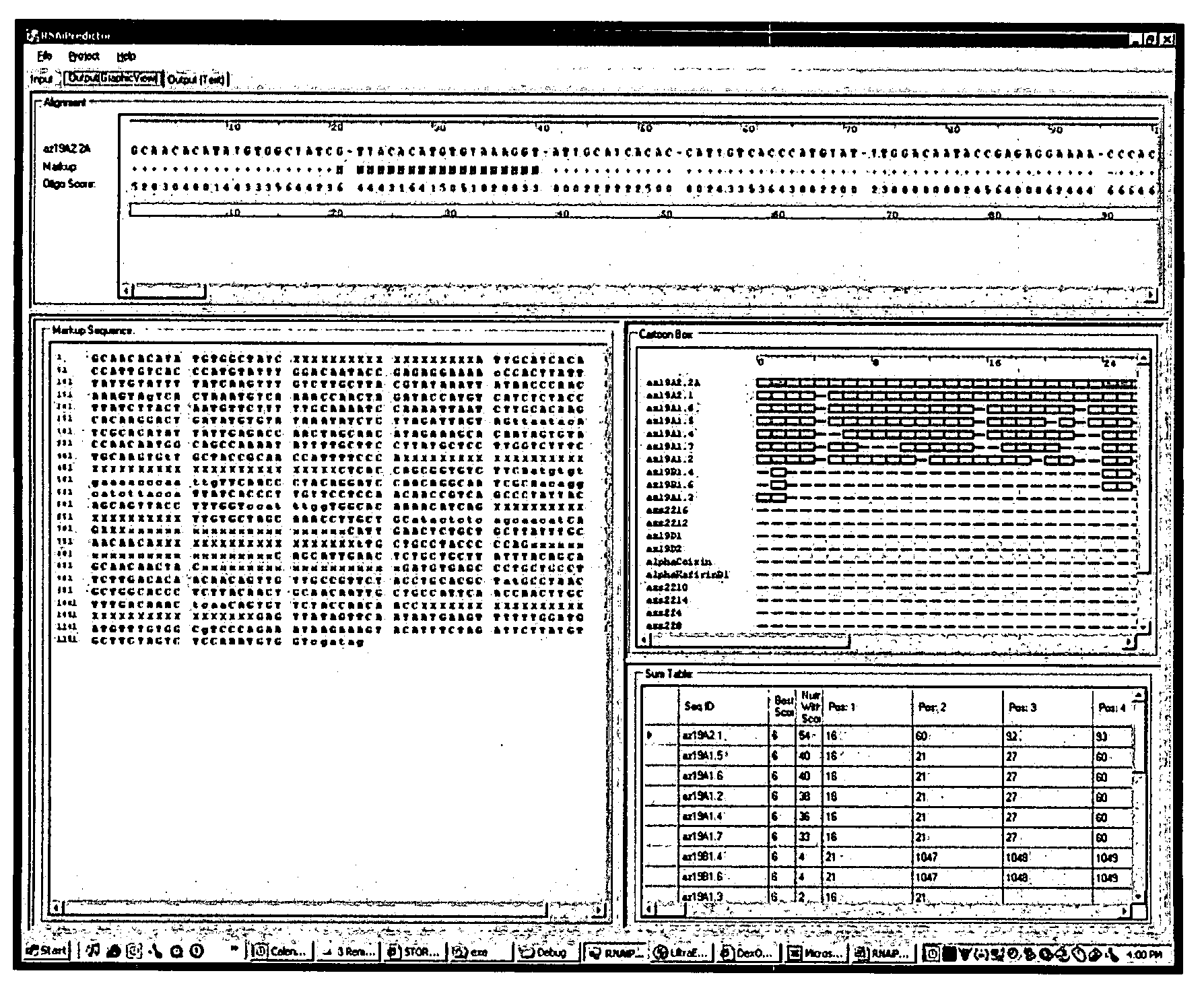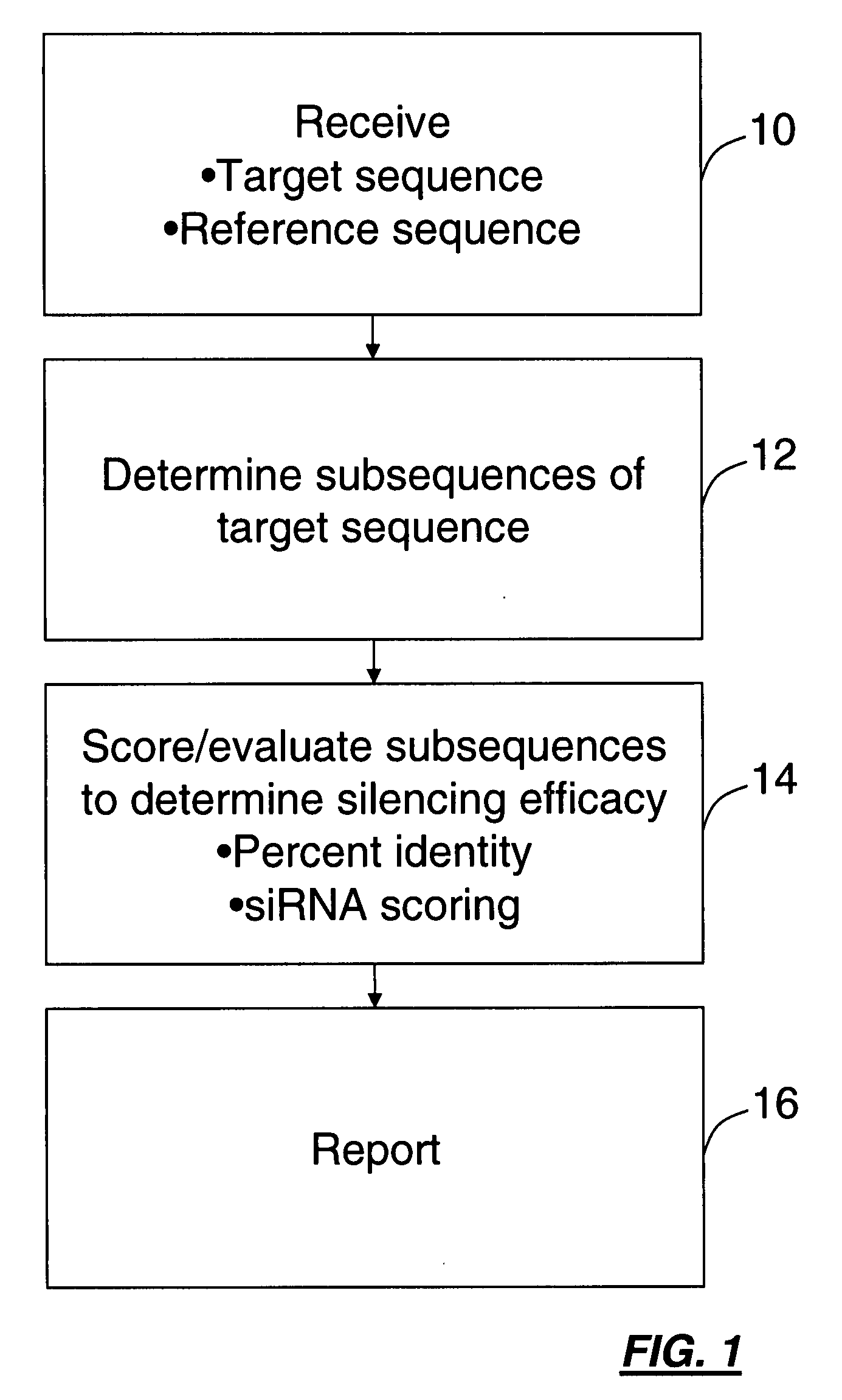Computational method for choosing nucleotide sequences to specifically silence genes
a nucleotide sequence and gene technology, applied in the field of biotechnology and molecular biology, can solve the problems of inefficiency or economic use of unpredictable sequences for silencing
- Summary
- Abstract
- Description
- Claims
- Application Information
AI Technical Summary
Benefits of technology
Problems solved by technology
Method used
Image
Examples
Embodiment Construction
[0045]The present invention includes a method that mimics the cell's in vivo silencing process, in that a longer sequence is processed into smaller subsequences for silencing. The present invention includes methods for identifying a polynucleotide sequence specific for a nucleic acid target for use in gene silencing. One method provides for identifying subsequences within a sequence for silencing a target polynucleotide. The basic steps involved in the method involve processing a sequence into a series of overlapping, contiguous polynucleotide subsequences, comparing each of the polynucleotide subsequences to a target sequence to obtain a percent identity / similarity with a target sequence, comparing the calculated percent identity of each subsequence to a selected threshold percent identity, subjecting the subsequences to an algorithm for determining silencing potential to obtain a score, comparing the calculated score of each subsequence to a selected threshold score and reporting ...
PUM
 Login to View More
Login to View More Abstract
Description
Claims
Application Information
 Login to View More
Login to View More - R&D
- Intellectual Property
- Life Sciences
- Materials
- Tech Scout
- Unparalleled Data Quality
- Higher Quality Content
- 60% Fewer Hallucinations
Browse by: Latest US Patents, China's latest patents, Technical Efficacy Thesaurus, Application Domain, Technology Topic, Popular Technical Reports.
© 2025 PatSnap. All rights reserved.Legal|Privacy policy|Modern Slavery Act Transparency Statement|Sitemap|About US| Contact US: help@patsnap.com



